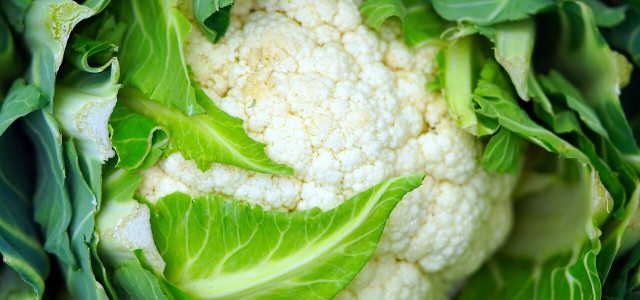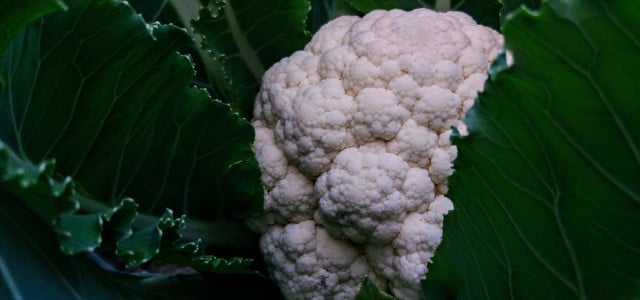Cooking cauliflower can seem like a daunting task if you have never tackled it before, but it is worth it for its versatility and health benefits. Keep reading for preparation and cooking tips.
Planted in the spring and early summer, cauliflower will be most plentiful in the fall. Look out for locally grown ones in your farmer’s markets, especially if you live in California, which produces the majority of our home-grown cauliflower. Always look out for organic produce to reduce the environmental impact and increase the sustainability of your food choices.
Cauliflower is a member of the cruciferous vegetable family which means that it is capable of producing something called sulforaphane. Sulforaphane can help improve liver function, and it has also been proven to protect us against cardiovascular disease. Cauliflower is also rich in choline which is essential for the healthy function of all cells and the brain. One cup of cauliflower contains forty-five grams of choline and is one of the top plant-based sources of this essential nutrient.
Naturally high in fiber and B vitamins and containing 77 percent of your daily vitamin C needs per cup, cauliflower is a delicious, healthy, and versatile vegetable that you can incorporate into your diet in a number of ways. Keep reading to learn how to prepare the vegetable and 8 different ways to cook it.
Spices and Flavors for Cooking Cauliflower
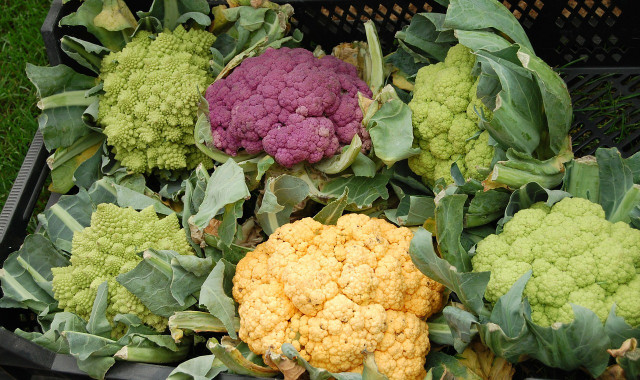
(Foto: CC0 / Pixabay / thraniwen)
Although cauliflower comes in a variety of shapes and colors, the most commonly available is pale in color, but it has an incredible ability to work well with a lot of bold flavors. Regardless of the type, when steamed or pureéd, cauliflower has a mild taste, but when roasted or fried, it has an earthy flavor that goes well with cumin, garlic, sesame, and spice.
Cauliflower and cheese are a match made in heaven, and the same is true for vegan cheese. Try pairing your cooked cauliflower with homemade vegan parmesan cheese.
The nuttiness of the vegetable also pairs well with nuts such as walnut and hazelnut.
How to Prepare
When preparing any fresh produce, you should always wash it in cold water beforehand.
In order to get the most sulforaphane from your cauliflower, it is advised that you should chop, slice, or cut — however you choose to prepare — at least forty minutes before cooking or consuming. This gives the vegetable enough time to produce the enzyme in a heat-stable state.
Always cut vegetables on a sturdy surface with a suitable chopping board. Large cauliflowers can be a little unwieldy, and their shape can make them a little difficult to cut.
Follow these tips for the safest way to chop:
- Snap off any especially large green leaves and set them aside (the younger ones are delicious and can be added to a stir fry, much like cabbage).
- Turn it on its side, and slice off the stem to create a flat base.
- Now you have a more sturdy vegetable to work with.
1. Roasted Cauliflower
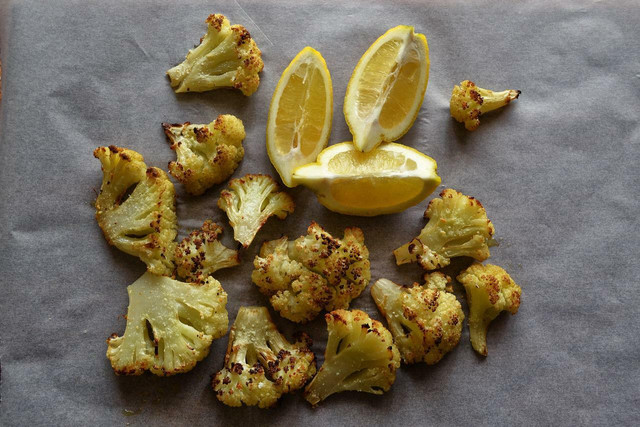


(Foto: CC0 / Pixabay / DanaTentis)
After washing and preparing, cut the vegetable into florets, in half or whole as a real centerpiece. There is no need to preheat the oven, and before you reach for the single-use parchment paper, spread a little sunflower oil or margarine on the oven tray, or find another suitable substitute for parchment paper.
Serve with a dressing made from a few tablespoons of tahini mixed with some fresh lemon juice.
- Place florets or chunks on a baking tray and drizzle with olive oil, season with salt and pepper, and roast at 400°F for 15-20 minutes, turning once.
- If roasting whole, use a casserole dish with a lid or a Dutch oven. Drizzle with olive oil, season with salt and pepper, and roast with the lid on at 400°F/220°C for 30 minutes (when nearly ready, a knife should go into the middle of the vegetable with only a little resistance).
- Cook without the lid on for an extra 10 minutes.
Top tip: throw a few bulbs of garlic in with the cauliflower when roasting, or roast with a medley of seasonal vegetables and fresh herbs.
2. Steamed
Steaming vegetables retains nutrients and leaves your veggies less water-logged than boiling. Prepare as advised, cut into large florets, and steam in a basket over a pan of boiling water. To save some more energy, you could boil pasta or potatoes in the pot simultaneously.
Steam for 4-8 minutes, place in a dish, and season with salt and pepper. Try cooking the cauliflower for a little less time and then adding it into vegan mac and cheese in place of some of the pasta.
3. Cooking Cauliflower as 'Rice'
If you are following a low-carb or keto diet, then cauliflower rice might be just the thing you have been looking for. Tasty and an easy way to sneak more veggies into your diet, it’s ready in only 15 minutes.
It also makes a great addition to a couscous salad as it brings a nutty flavor and is great with pomegranate.
4. As Vegan 'Wings'



(Foto: CC0 / Pixabay / harrydona)
Cauliflower has a fairly mild, nutty taste and a shape and texture that is excellent for making vegan ‘chicken wings’. Dredge florets in a mixture of cornstarch, salt, black pepper, smoked paprika, and garlic powder, and deep-fry until crisp. Serve with a range of vegan hot sauces and vegan sriracha mayo.
5. Pan Fried
You can easily make a ‘cheats’ roasted cauliflower, without having to turn the oven on, which can often be wasteful. Simply prepare the cauliflower as before, but slice it into steaks. Season and pan fry until tender and starting to brown and crisp. Serve the cooked cauliflower with hummus and fresh salad.
6. Cooking Cauliflower in a Soup or Stew
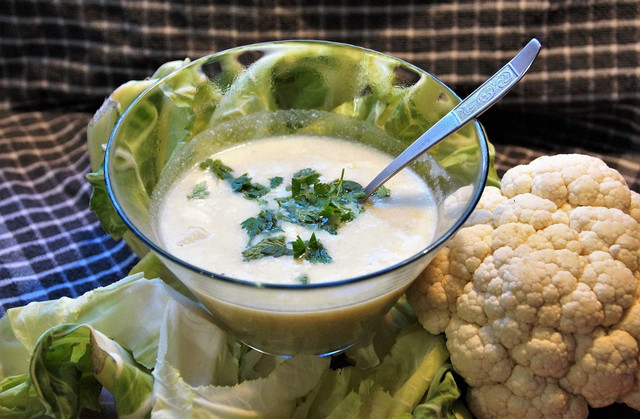


(Foto: CC0 / Pixabay / ivabalk)
Cauliflower can be enjoyed as an ingredient in a stew, or as a creamy soup in its own right. It is easy to veganize many recipes by using olive oil or vegan butter in place of butter, usuíng a vegan stock, and replacing any cream or dairy product with an animal-friendly plant-based alternative. We recommend oat for extra sustainability.
7. Blanched
If you find yourself with too much cauliflower, you might want to freeze it to avoid waste. Cooking cauliflower by blanching is an excellent way to prepare it for freezing. Not only does it help to retain the nutrients in the vegetable, but it should prevent it from going mushy when cooking the cauliflower later.
- Prepare a bowl of iced water, and keep to the side.
- Add prepared cauliflower florets to a pan of boiling water, and cook for 2 minutes only.
- Remove from the water with a slotted spoon (you can use the water in a vegetable broth recipe later), and plunge into the iced water.
- Once cold, pat dry with a clean tea towel and freeze in freezer-safe containers.
There is no need to thaw the cauliflower before using it.
8. Cauliflower as Bread
You don’t have to cook cauliflower as a side vegetable. It is so versatile, that it can also be made into bread. Try this cauliflower bread recipe next time you see the vegetables at the local market.
Read more:
- Spinach and Feta Pizza Recipe for Vegetarians and Vegans
- Can You Eat Brocolli Leaves? Two Easy Recipes
- Vegan Corned Beef and Cabbage Recipe
Do you like this post?






